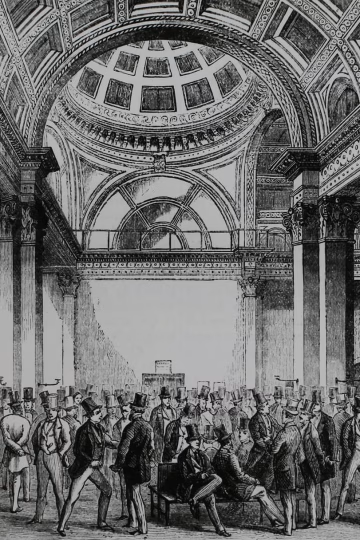Victorian Bournemouth (235) surveyed the commercial terrain evident during the 1890s. It finds that enterprises perhaps adhered to the changing commercial norms wrought by the country’s governments. Nevertheless, Bournemouth’s early success, resulting in part from a strong, closed network comprised of a few people, perhaps experienced difficulties as time passed. By then, the scale of activity required a more open system, welcoming new ideas and qualified people.
Latest Posts
Victorian Bournemouth (234): Q2 summary
Victorian Bournemouth (234) has summarised the articles published in the last quarter. These took community groups as an overall theme. It has shown how the groups differed according to their position within the Maslow hierarchy. In addition, it has observed how, while some groups attempted to perpetuate class and gender prejudice, others succeeded in bringing together all members of society. In some cases, therefore, the groups constituted jeux sans frontières.
Victorian Bournemouth (233): Town Interest Association
Victorian Bournemouth (233) has followed the Town Interest Association as it fluttered into public attention for a short time. Philpots blazed a short-lived trajectory through local politics, but, as did other gentlefolk, he abandoned the town. Perhaps the Association’s main success consisted of launching the community career of its secretary, John Armitage Crawshaw. He adhered to the model whereby others of humble origin achieved respectability at Bournemouth. He exemplified how individuals of modest origins could attain respectability in Bournemouth. His involvement in many activities would have established a broad presence within the community.
Victorian Bournemouth (232): golf
Victorian Bournemouth (232) notes that Meyrick Park, the resort’s first golf course, boosted the local economy by attracting gentle folk and leisured people to the new sport of golf. This supported tourism and promoted Bournemouth’s fashionable image. It also provided jobs, bringing income and an opportunity for social improvement to local working people.
Victorian Bournemouth (231): CEWMU
Victorian Bournemouth (231) has explored the fortunes of the resort’s CEWMU during the 1890s. It finds a group that prospered. It supported a variety of cultural activities and meeting points where the religious message perhaps acted at most as an undertow. Members found opportunities for social and cultural experiences. They could also read a newsletter. Crumpler’s support, energy, and direction stimulated the spread of similar groups across the suburbs.
Victorian Bournemouth (230): slate clubs
Victorian Bournemouth (230) has traced the activities of slate clubs as reported in the local press during the last two decades of the century. Once a feature expressing the personality of their sponsoring local pubs, this form of behaviour became institutionalised to take its place amongst Bournemouth’s other charitable bodies.
Victorian Bournemouth (229): knowledge sharing
Victorian Bournemouth (229) explored the wide range of topics addressed through lectures and debates. Lectures typically offered gentle, didactic discussions, sometimes touching on politics and current affairs that could spark passionate views. Debates aimed to provoke active engagement with contemporary issues. This approach enriched Bournemouth’s culture by addressing subjects of both academic and current relevance.
Victorian Bournemouth (228): Oxford University Extension
Victorian Bournemouth (228) has suggested that marketing myopia contributed to the local Oxford University Extension scheme’s failing to achieve commercial success. The lecturers, motivated by their belief that educational success should not rely on ‘mere material benefits,’ failed to recognise that their commercial opportunity lay in providing afternoon entertainment to respectable individuals. Embracing this perspective could have alleviated financial constraints. The education sought by working people to improve their conditions presented a different marketing challenge better comprehended by others.
Victorian Bournemouth (227): cage birds
Victorian Bournemouth (227) has delved into the contributions of its members to the Cage Bird Association, shedding light on their social standing. The study reveals that a group of working individuals formed the club’s backbone, some of whom may have cultivated friendships and connections beyond its confines. In particular, the involvement of both a coachman and his employer (a wealthy physician) suggests that a shared love for birds transcended social boundaries.
Victorian Bournemouth (226): chrysanthemum show (3)
Victorian Bournemouth (226) has speculated on how experienced men, although designated as servants, guided respectable and privileged people in making decisions about the chrysanthemum show’s management. To explain how this may have succeeded, it offered, as an analogy, how the army’s non-commissioned and commissioned officers made shared decisions. Relevant experience overcame the need for deference and induced mutual respect. Victorian masters referred to their servants by surname alone. In contrast, the speeches congratulating James Spong’s organisational efforts used the title ‘Mr’.









